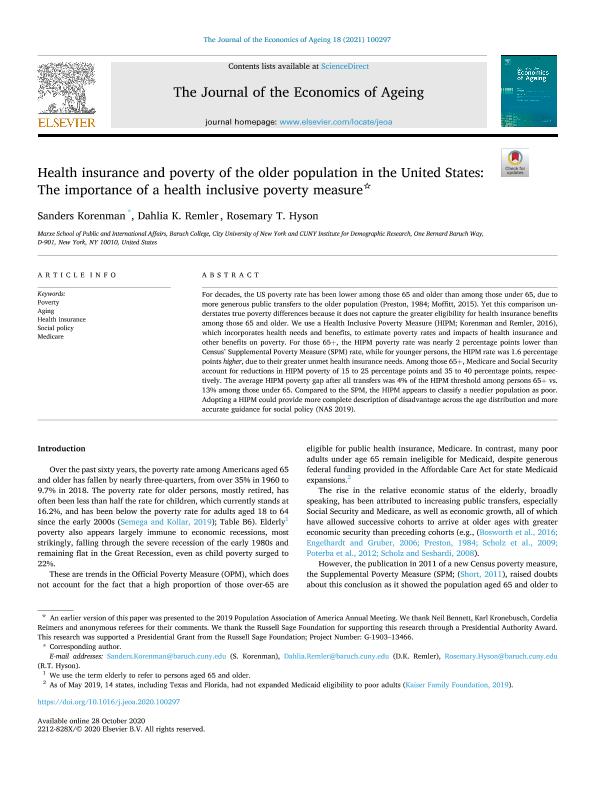T. Hyson, Rosemary
Health insurance and poverty of the older population in the United States

Contenido multimedia no disponible por derechos de autor o por acceso restringido. Contacte con la institución para más información.
T. Hyson, Rosemary

